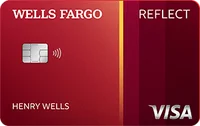Which cards still offer a 21-month intro APR?



Key takeaways
- Lengthy credit card balance transfer offers can mean the difference between paying hundreds in interest and paying nothing at all.
- Balance transfer cards with 21-month intro periods can help you pay off debt, but they carry few benefits beyond the intro period.
- Alternatives for paying down debt include shorter intro periods and consolidation loans.
A recent Bankrate survey revealed that 48 percent carry credit card debt month-to-month. Credit card balances often come with a high annual percentage rate (APR), so a balance transfer card can be an effective money-saving option for paying down high-interest credit card debt. And the longer the introductory period, the greater your potential savings.
While you’ll find many excellent balance transfer cards on the market, it’s become more difficult recently to find credit cards with 0 percent APR for 21 months. That said, you do still have options if you’re looking for a longer-than-typical intro APR offer. Discover a few of your 21-month intro offer card options, as well as the pros and cons of that lengthy APR offer and alternatives to consider for paying down your debt.
Cards that offer 21 months of 0% APR for balance transfers
These cards offer some of the longest intro APR periods for balance transfers on the market.

Citi Simplicity® Card
Who should get this card?
The Citi Simplicity works best for someone with good to excellent credit — a FICO score of 670 to 850 — who needs a lengthy balance transfer period but can get by with a shorter intro purchase period. The low-end-of-normal intro balance transfer fee of 3 percent could add up to substantial savings over a card that charges the typical 5 percent fee.
For example, if you transfer $5,000 to Citi Simplicity, its 3 percent balance transfer fee would tack on another $150 for a total balance of $5,150 to pay off. But a card that charges a 5 percent balance transfer fee would add $250 to your balance, totaling $5,250.

Citi® Diamond Preferred® Card
Who should get this card?
Citi Diamond Preferred offers access to Citi Entertainment and has a few additional perks, but it isn’t ideal for balance transfers compared to others on this list. Its higher balance transfer fee puts it behind the Citi Simplicity. If you’re looking for a Citi balance transfer card, there isn’t a compelling reason to choose this one over Simplicity.

Wells Fargo Reflect® Card
Who should get this card?
Wells Fargo Reflect offers an equally lengthy 21-month intro 0 percent APR on both qualifying purchases and balance transfers for people with at least good credit. If you need to both transfer existing high-interest debt and make new purchases to pay off over time, this card is a solid choice.

U.S. Bank Visa® Platinum Card
Who should get this card?
The U.S. Bank Visa Platinum card checks all the boxes with its limited-time offer of an intro 0 percent APR for 21 billing cycles on purchases and balance transfers (before the ongoing 17.74 percent to 28.74 percent variable APR kicks in). It’s worth considering if you need to pay off debt without interest temporarily and pay off a large purchase at the same time. But you’ll need to act quickly and complete your transfer within the first 60 days or else you’ll lose out on the intro offer. If you need more breathing room, the Wells Fargo Reflect card might be a better choice.
Looking for more choices? Check with your local or affinity-based credit union for credit cards. While credit unions don’t advertise their products as widely as larger traditional banks, they often offer highly competitive rates on loan products, including credit cards.
Pros and cons of credit cards with 0% APR for 21 months
Cards designed solely for balance transfers or avoiding interest on purchases are a boon to cardholders who may carry a balance or want to pay off high-interest debt. Weigh the advantages and disadvantages of these cards before applying.
Pros
- Helps you pay down debt. At 21 months to pay off debt interest-free, these are among the longest periods you’ll find on any card. Nearly two years to pay down a balance without accruing interest can be life-changing.
- Good for large purchases. The best 0 percent APR cards also offer an interest-free period for purchases, so you can finance large expenses over time.
- May benefit your credit utilization ratio. When you open a new card, your available credit increases. If you don’t make purchases with your new card and focus on paying down debt, your credit utilization ratio will decrease, which can help your credit score.
Cons
- Fewer features or rewards. Dedicated balance transfer cards tend to lack the same perks available on a rewards card, such as cash back, a sign-up bonus or travel-related features.
- Balance transfer fees can be high. Most balance transfer cards charge a fee on your transferred balance that’s between 3 percent and 5 percent of the transferred amount. Depending on how much money you transfer, this can result in significant extra costs.
- Credit requirements are high. The best balance transfer offers require a good to excellent FICO score of 670 or higher. This is unfortunate, as cardholders with poor financial health are most likely to benefit from a long balance transfer period.
- Can’t move balances from the same bank. Banks usually don’t allow you to transfer balances between their products. It means if you already hold a Citi card, you can’t open a Citi Simplicity and move the balance to that card. If you’re in this situation, choose a card that isn’t with your current issuer or consider an alternative to paying down your debt.
Alternatives to a 21-month interest-free credit card
Opening a 21-month balance transfer credit card is a great first step to paying down your debt, but other debt repayment options might work better for your situation. Check out these suggestions.
The bottom line
A balance transfer card is among the best tools for paying down your debt interest-free with minimal hassle, and a 21-month intro period can give you the most wiggle room to make your payments comfortably. Given the recent trends in balance transfer cards shortening their intro periods or raising balance transfer fees, you may want to apply soon if you’ve had your eye on a particular offer.
*Information about the U.S. Bank Visa® Platinum Card, Citi Simplicity® Card and Citi® Diamond Preferred® Card has been collected independently by Bankrate. Card details have not been reviewed or approved by the card issuer.






